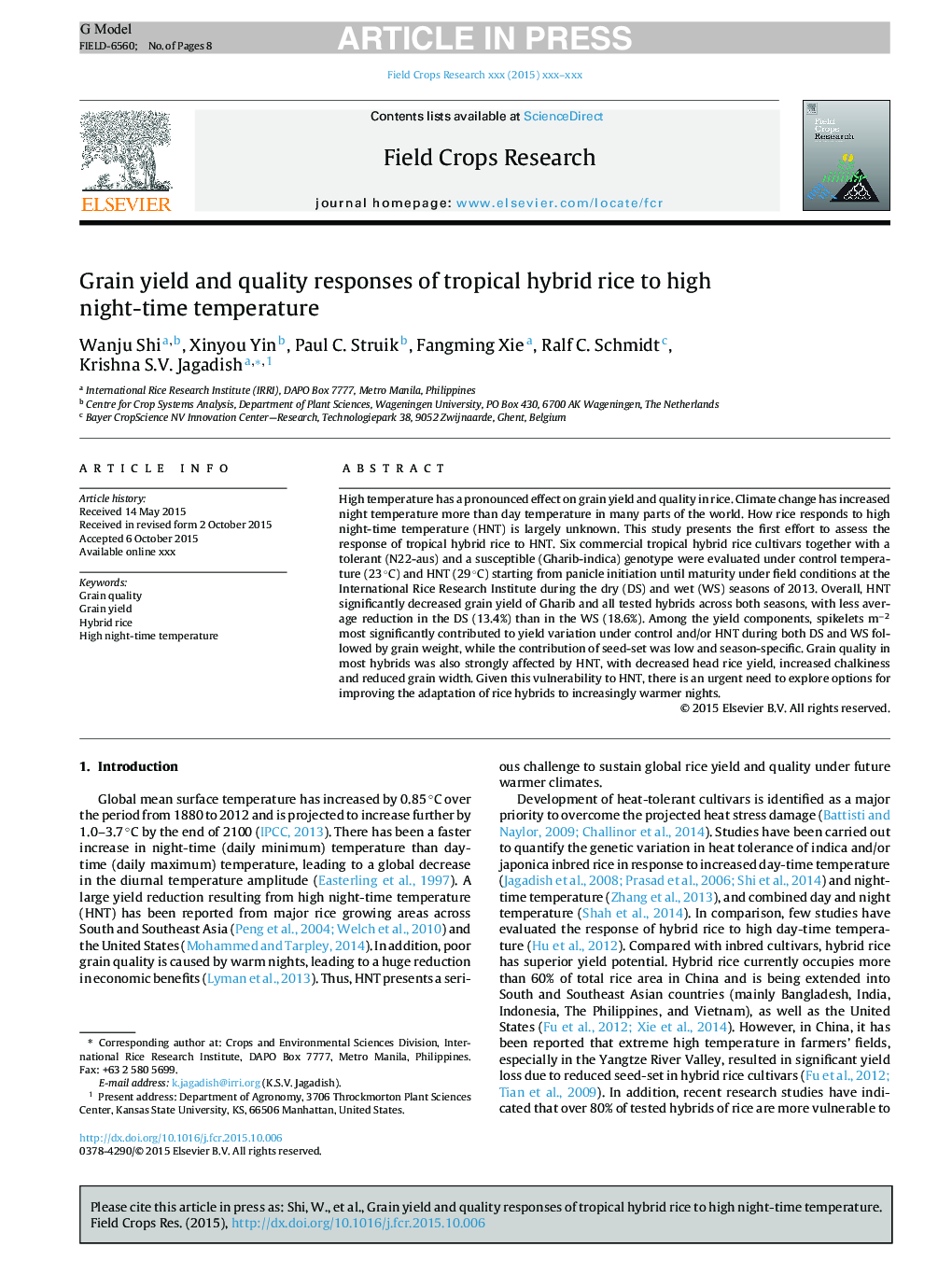| Article ID | Journal | Published Year | Pages | File Type |
|---|---|---|---|---|
| 6374466 | Field Crops Research | 2016 | 8 Pages |
Abstract
High temperature has a pronounced effect on grain yield and quality in rice. Climate change has increased night temperature more than day temperature in many parts of the world. How rice responds to high night-time temperature (HNT) is largely unknown. This study presents the first effort to assess the response of tropical hybrid rice to HNT. Six commercial tropical hybrid rice cultivars together with a tolerant (N22-aus) and a susceptible (Gharib-indica) genotype were evaluated under control temperature (23 °C) and HNT (29 °C) starting from panicle initiation until maturity under field conditions at the International Rice Research Institute during the dry (DS) and wet (WS) seasons of 2013. Overall, HNT significantly decreased grain yield of Gharib and all tested hybrids across both seasons, with less average reduction in the DS (13.4%) than in the WS (18.6%). Among the yield components, spikelets mâ2 most significantly contributed to yield variation under control and/or HNT during both DS and WS followed by grain weight, while the contribution of seed-set was low and season-specific. Grain quality in most hybrids was also strongly affected by HNT, with decreased head rice yield, increased chalkiness and reduced grain width. Given this vulnerability to HNT, there is an urgent need to explore options for improving the adaptation of rice hybrids to increasingly warmer nights.
Keywords
Related Topics
Life Sciences
Agricultural and Biological Sciences
Agronomy and Crop Science
Authors
Wanju Shi, Xinyou Yin, Paul C. Struik, Fangming Xie, Ralf C. Schmidt, Krishna S.V. Jagadish,
